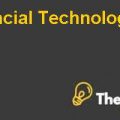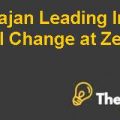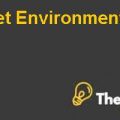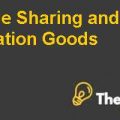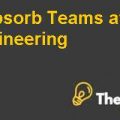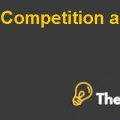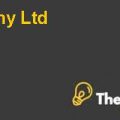
METHOD: ENTRPRENEURIAL INNOVATION, HEALTH, ENVIRONMENT, AND SUSTAINABLE BUSINESS DESIGN
Situation # 1: Should Lowry push forward with plans to manufacture PLA based products in China? Why or why not?
Adam Lowry, co-founder of Method (an entrepreneurial firm) was focusing more on bringing environmental sustainability in developing home cleaning products. His proposed idea gained wide acceptance by the retailers and consumers, but they doubted how the product was going to be formulated without using GMOs (Genetically Modified Organisms). GMO refers to the cross-breeding of different plants to create new plants that are better and beautiful producers of the crop (George, 2013). More precisely, it refers to the use of natural crops such that they are modified genetically to produce food in abundance to meet the needs of every living being on earth (George, 2013). However, scientist and critics doubt the benefits that can be reaped through this technology. Lowry wanted to produce his product line that was purely BIOBASED using BIODEGRADABLE MATERIALS that decompose fast and are recyclable too. Method wanted to seize the opportunity of conducting a sustainable business. Lowry’s idea of incorporating sustainability into Method’s product line was based on the inspiration of environmental concerns. The corporate strategy for Method therefore, was to develop products (home-cleaning) which had nice fragrance, had an eye-catching packaging, and were biodegradable; which can be placed on the countertop, compared to the products produced at present by the corporate giants (evolved from the toxic substances that had to be locked in order to keep them away from children and had to be hidden in cupboards). Method started-off with one product and added 124 products simultaneously. Hence, the product expansion led the products of the company to sum up to 125. Further, in 2006, Inc Magazine listed Method as 7th out of the 500th fastest growing and most successful firms in United States; which the achievement of a milestone.
Method entered the market by operating as a low leveraged firm with $300,000 in a $17 Billion industry, which reflects its good equity position. Operating with 45 employees, and generating revenues of $50 million per annum was a pace that no corporate seem to match in the industry. Method’s product was available on all channels from well-known departmental store to all other retail outlets. In addition, it didn’t loosen its efforts on promoting itself on the social media network, where they took live feedback from consumers, who were inspired by the innovation brought by Method and requested for Methods’ T-shirts. Following the consumers requested for Method designed two T-shirts, these two T-shirts included: one saying that it cleans like a mother, and other simply put, “Method” along with the company' slogan: “People against Dirty”, which was Method’s mission statement. Here by the word dirty they meant, use of toxic chemicals in producing the product and testing of those products being conducted on innocent animals. They rather planned to deliver high-quality products with a premium by focusing on appealing customers through price, design, health, and ecological perspective- free from propellants, phosphates (that speeds up growth of algae/ depletes the oxygen levels/ starves the aquatic life and makes the water toxic for animals to drink.), and chlorine bleach. When these substances are released in air so; they produce toxic compounds that are harmful for human and non-human life on earth alike. Method’s prime focus was on sustainable products whereas dominant players in this market e.g. P&G, Unilever, SC Johnson and Colgate Palmolive primarily focused on massive scale and costs. This was seen by Method as a window of opportunity that could be seized and might help it achieve a competitive landscape. Therefore, they adopted an opposite approach, which prevailed in the market at that time and tried to minimize the ecological footprint along with embracing the use of PLA (Poly-lactic Acid) instead of PET (Poly-ethylene-Terephthalate).
To incorporate this idea, Method conducted a two-pronged approach. First approach was that Method formulated products that match in performance to the big giants product line; while minimizing the environmental impact and bringing sustainability into the products, without compromising technology. Whereas, the second approach was to introduce an eye-catching design to serve the gap, which the prevalent giants have ignored; hence, consumers tired of the same old packaging style of the home cleaning products. They believed these two were an opportunity to re-invent, innovate, sustain and achieve a competitive landscape. For this they relied heavily on their marketing campaigns and the packaging solutions to cater the frustrated consumer from the environmental impacts of these products and promoting the idea that Method is “against dirty”. The first of Methods’ retailer’s co-owner, Mollie Stones, commented on Method’s product line, that the products looked such upscale, which themselves made their way to our shelves. Gearing the focus on using .................................
This is just a sample partial case solution. Please place the order on the website to order your own originally done case solution.
With the method was at number seven in the list of Inc. magazine of the 500 fastest growing companies in 2006, co-founder Adam Lowry looking biodegradable cloth to extend the line of the method of "green" products for the home. Sustainable design principles have been a guiding force in the strategy method, and being biofriendly critical. Thus, in the search in the United States. But only China can produce corn-based fabric Lowry has in mind, and there is no way to confirm that the product does not contain genetically modified organisms. Lowry has to balance the fundamental commitment of the firm to environmental sustainability against the fact that some retailers refuse to carry products containing GMOs. "Hide
by Andrea Larson Source: Darden School of Business 7 pages. Publication Date: March 26, 2007. Prod. #: UV0815-PDF-ENG

